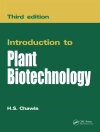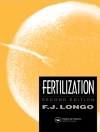This book brings together contributions from key investigators in the area of pathological pain. It covers the molecular basis of receptors and channels involved in nociception, the possible messages that cause neuropathic plasticity, spinal plasticity in neuropathy, plastic changes in opioid systems in neuropathy and opioid tolerance, and plastic changes related to pathological pain.
Cuprins
Chair’s Introduction (Takao Kumazawa).
Regulation Mechanisms of Vanilloid Receptors (Makoto Tominagaet,
et al.).
Sodium channels and neuropathic pain (Jin Mo Chung and Kyungsoon
Chung).
Ion channel activities implicated in pathological pain (John N.
Wood, et al.).
General Discussion I.
Chronic pain and microglia: the role of ATP (Kazuhide Inoue,
et al.).
Neurotrophic influences on neuropathic pain (Stephen B. Mc Mahon
and William B. J. Cafferty).
Changes in DRG neurons and spinal excitability in neuropathy
(Koichi Noguchi, et al.).
Functional reorganization of the spinal pain pathways in
developmental and pathological conditions (M. Yoshimura, et
al.).
Central plasticity in pathological pain (Min Zhuo).
General Discussion II.
Anti-opioid systems in morphine tolerance and addiction:
locus-specific involvement of nociceptin and NMDA receptor (Hiroshi
Ueda).
Chronic morphine-induced plasticity among signalling molecules
(Alan R. Gintzler and Sumita Chakrabarti).
Opioid tolerance and neuroplasticity (Jianren Mao).
General Discussion III.
A mechanism-based understanding of bone cancer pain (Patrick W.
Mantyh).
Mechanistic and clinical aspects of complex regional pain
syndrome (CRPS)(Ralf Baron).
Cortical pathophysiology of chronic pain (A. Vania
Apkarian).
Final Discussion: Translating basic research to the clinic.
Index of contributors.
Subject index.
Despre autor
Derek J. Chadwick and Jamie A. Goode are editors for Pathological Pain: From Molecular to Clinical Aspects and other scientific titles.












